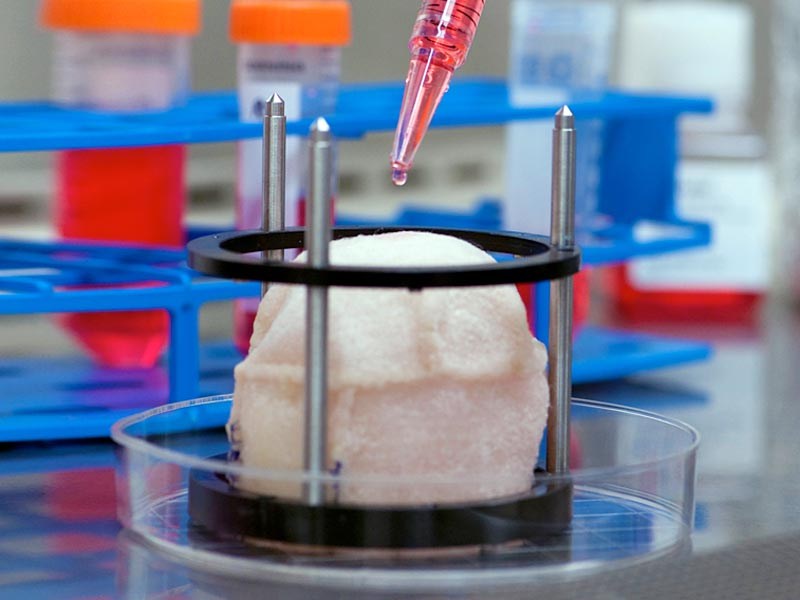The
brain is associated with everything related to art and science. Looking back at
previous topics, it is really the brain that creates unconscious stereotypes of
others or acts as the model for artificial intelligence. Unlocking the many
mysteries of the brain pushes the realm of art and science beyond one's wildest
dreams.

Salvador Dali's Dream Caused by the Flight of a Bee around a Pomegranate a Second Before Awakening (1944) is one of many works that has ties to Freudian theory[1].
Speaking
of dreams, the influence of Freud’s psychoanalysis does play a pivotal role in the
study of the mind in art and culture. His methods are archaic by today’s standards. Jung is even right to say that Freud
focused too much on sexuality with ideas such as the Oedipus complex[1][2].
However, Freud is the one who really popularized the dream and the mind in society.
He has brought many scientists to look inward instead of outward, and he has inspired
the works for many Surrealist artists such as Salvador Dali[3]. Even
nowadays, his presence can be found in the critically acclaimed movie Inception by Christopher Nolan. This movie largely plays around with the ideas of unconscious desires and symbolism
in dreams. Despite his influence, Freud's ideas of dreams are merely interpretations of thoughts, which do not
say much about the brain itself.

Instead
of dreams, there are some who believe that certain drugs are the key to liberating
the mind. Lysergic Acid Diethylamide (LSD) created by Albert Hofmann is a
popular choice for its hallucinogenic effects[4]. Based on a 1950’s government
experiment, one artist known as whatafinethrowaway took 0.2 milligrams of LSD
to create beautiful, yet haunting self-portraits[5]. These
results show how the drug can breed a new type of creativity in a person by
altering the mind. While this might be considered a positive for the drug’s
use, it is overall highly dangerous from the government level to the public one.
The government’s MK Ultra Project attempted to experiment with mind control using
LSD, which resulted in many suicides[4]. On the other
hand, the 2012 horror of Rudy Eugene eating off another man’s face was also
caused by LSD ingestion[6]. As these instances show, drugs like LSD
are not the ideal ways to discover more about the brain due to their serious
consequences.
A video of the women's self-portraits after taking LSD[3].
If
dreams and drugs are not the answers to unlocking the secrets of the brain,
what is? The answer really lies in neuroscience. Neuroscience is leading the
charge to create new mind-blowing projects for artists and scientist alike. A
great example can be found in Brainbow, a project in which neurons are colored
with various fluorescent proteins[7]. The images look breathtaking,
and they are colorful forms of artistry. At the same time, they show the many
inner-workings of the brain that cannot be seen through dreams or LSD. In the
end, it is truly neuroscience that has the ability to benefit both art and science.

A picture of the hippocampus and cortex using Brainbow technology[4].
Sources:
1. Vesna, Victoria. "Neuroscience and Art Part 2: Unconscious Mind/Dreams." YouTube. uconlineprogram, 17 May 2012. Web. 15 July 2016. <https://www.youtube.com/watch?v=TFv4owX3MZo>.
2. Editors of Encyclopædia Britannica. "Oedipus
Complex." Encyclopædia Britannica. Encyclopædia Britannica Inc., n.d. Web.
16 July 2016. <https://www.britannica.com/topic/Oedipus-complex>.
3. "Freud’s Influence on Dali’s Surreal “Dream”
Painting." Park West Gallery. Park West Gallery, n.d. Web. 16 July 2016. <https://www.parkwestgallery.com/freuds-influence-on-dalis-surreal-dream-painting/8948>.
4. Vesna, Victoria. "Neuroscience and Art Part 3: NeuroChemicals." YouTube. uconlineprogram, 16 May 2012. Web. 15 July 2016. <https://www.youtube.com/watch?v=E5EX75xoBJ0>.
5. James, Emily. "Art on Acid: Illustrator Takes LSD
before Spending NINE HOURS Drawing a Series of Increasingly-abstract
Self-portraits to Demonstrate the Drug's Effect on Her Brain."
DailyMail.com. Associated Newspapers Ltd, 1 Sept. 2015. Web. 16 July 2016. <http://www.dailymail.co.uk/femail/article-3217307/Art-acid-Illustrator-takes-LSD-spending-NINE-HOURS-drawing-series-increasingly-abstract-self-portraits-demonstrate-drug-s-effect-brain.html>.
6. Show, Cristine, and Louise Boyle. "First Picture: The
Naked Man Who Ate the Face off Victim in Horror Attack While High on LSD before
Being Shot Dead by Police." DailyMail.com. Associated Newspapers Ltd, 28
May 2012. Web. 16 July 2016. <http://www.dailymail.co.uk/news/article-2151098/Rudy-Eugene-Naked-man-eats-face-victim-high-LSD-police-shoot-Miami.html>.
7. Vesna, Victoria. "Neuroscience and Art Part 1: Consciousness/Memory." YouTube. uconlineprogram,
17 May 2012. Web. 15 July 2016. <https://www.youtube.com/watch?v=TzXjNbKDkYI>.
Images/Videos:
1. Dali, Salvador. Dream Caused by the Flight of a Bee around a
Pomegranate a Second Before Awakening. 1944. Park West Gallery,
Thyssen-Bornemisza Museum, Madrid. Park West Gallery. Park West Gallery. Web.
16 July 2016. <https://www.parkwestgallery.com/freuds-influence-on-dalis-surreal-dream-painting/8948>.
2. 7 Layers of Inception. Digital image. THiNC.
THiNC, 10 July 2010. Web. 16 July 2016. <http://taylorholmes.com/2010/07/20/7-layers-of-inception/>.
3. A Woman's Self Portrait before and after LSD. Perf.
Whatafinethrowaway. YouTube. Troplr, 12 Aug. 2015. Web. 16 July 2016. <https://www.youtube.com/watch?v=76yemnRduCA>.
4. Lichtman, Jeff. Hippocampus and Cortex. 2007. Center for
Brain Science. Center for Brain Science at Harvard University. Web. 16 July
2016. <http://cbs.fas.harvard.edu/science/connectome-project/brainbow#>.












